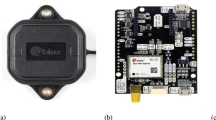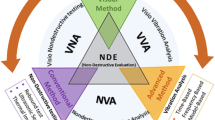Abstract
Hybrid test is a new seismic test method combining numerical simulation with physical test. It is an advanced test method to evaluate the performance of nonlinear structures and systems. This paper proposes a novel hybrid test control system based on MATLAB-STM32. The system uses the STM32 microcontroller as the main controller and electrodynamic vibrator as excitation source of system. Furthermore, a complete set of hybrid test control system which includes physical hardware test and numerical software simulation is established by using MATLAB-STM32 communication technology, PID control method, displacement sensors, force sensors, etc. It provides a test platform for nonlinear test structures, components that are difficult to model, or components that require performance testing. This system realizes the function of real-time two-way communication between MATLAB and STM32 microcontroller. It uses the finite element software OpenSees to establish the numerical substructure, which solves the problem of the collaborative work between the numerical simulation test and the physical test of the experimental substructure, and can simulate the hybrid dynamic seismic test of the damping structure. To test the control performance of the designed system, this paper selects the viscoelastic dampers as the test substructure, and the performance detection and test analysis are completed for the hybrid test of single-layer frame structure with a viscoelastic damper. The test results show that the data communication between the upper and lower computers is stable and the whole control system performs well on both dynamic and static behaviors.









Similar content being viewed by others
REFERENCES
Nakashima, M., Philos. Trans. R. Soc., A, 2001, vol. 359, no. 1786, p. 1851. https://doi.org/10.1098/rsta.2001.0876
Dologlou, E., Int. J. Remote Sens., 2014, vol. 35, no. 24, p. 8208. https://doi.org/10.1080/01431161.2014.980921
Li, Y., Wu, B., Wang, Q., and Ou, J., China Civ. Eng. J., 2006, vol. 39, no. 7, p. 9. https://doi.org/10.3321/j.issn:1000-131X.2006.07.002
Chen, Z., Xu, G., Wu, B., Sun, Y., Wang, H., and Wang, F., Earthquake Eng. Struct. Dyn., 2014, vol. 43, no. 7, p. 969. https://doi.org/10.1002/eqe.2382
Nakashima, M., Kato, H., and Takaoka, E., Earthquake Eng. Struct. Dyn., 1992, vol. 21, no. 1, p. 79. https://doi.org/10.1002/eqe.4290210106
Pearlman, L., IEEE Trans. Ind. Appl., 2004, vol. 51, no. 4, p. 14. https://doi.org/10.1109/HPDC.2004.1323474
Takahashi, Y. and Fenve, G.L., Earthquake Eng. Struct. Dyn., 2006, vol. 35, no. 3, p. 267. https://doi.org/10.1002/eqe.518
Kwon, O.S. and Nakata, N., J. Earthquake Eng., 2005, vol. 9, no. 5, p. 741. https://doi.org/10.1142/S1363246905002158
Xu, G., Hao, W., Chen, Y., Wu, B., and Ou, J., Eng. Mech., 2013, vol. 30, no. 3, p. 417. https://doi.org/10.6052/j.issn.1000-4750.2011.10.0658
Xu, Z.D., Wang, K.Y., and Guo, Y.Q., Nondestr. Test. Eval., 2016, vol. 32, no. 1, p. 1. https://doi.org/10.1080/10589759.2016.1149581
Sangyam, T., Laohapiengsak, P., Chongcharoen, W., and Nilkhamhang, I., IEEE Trans. Autom. Control, 2010, vol. 40, no. 3, p. 1265.
Tang, K.S., Kim, F.M, Chen, G., and Kwong, S., IEEE Trans. Ind. Electron., 2001, vol. 48, no. 4, p. 757. https://doi.org/10.1109/41.937407
Kim, W. and Choi, S.Y., Comput. Struct., 2018, vol. 196, p. 341. https://doi.org/10.1016/j.compstruc.2017.10.002
Xiong, T., Pu, Z., Yi, J., and Tao, X., IET Control Theory Appl., 2020, vol. 14, no. 9, p. 1147. https://doi.org/10.1049/iet-cta.2019.0309
Pan, P., Nakashima, M., and Tomofuji, H., Earthquake Eng. Struct. Dyn., 2005, vol. 34, no. 8, p. 869. https://doi.org/10.1002/eqe.457
Ince, M., Yigit, T., and Isik, A.H., Int. J. Inf. Technol. Decis. Making, 2020, vol. 19, no. 2, p. 629. https://doi.org/10.1142/S0219622020500054
Bartl, A., Mahdiabadi, M.K., Insam, C., Mayet, J., and Rixen, D.J., Mech. Syst. Signal Process., 2020, vol. 139, no. 15, p. 1215. https://doi.org/10.1016/j.ymssp.2019.106586
Chen, Z., Salas-Avlia, J.R., Tao, Y., Yin, W., Zhao, Q., and Zhang, Z., Rev. Sci. Instrum., 2020, vol. 91, no. 2, p. 153. https://doi.org/10.1063/1.5130734
Yuan, Y., Xiong, S., and Zhu, H., J. Southeast Univ., Nat. Sci. Ed., 2008, vol. 38, no. 5, p. 784. https://doi.org/10.3321/j.issn:1001-0505.2008.05.009
Liu, J., Qiao, B., Zhang, X., Yan, R., and Chen, X., Mech. Syst. Signal Process., 2019, vol. 132, p. 122. https://doi.org/10.1016/j.ymssp.2019.06.024
Jon, U., Kim, J., and Lee, H., Int. J. Automot. Technol., 2018, vol. 19, no. 6, p. 959. https://doi.org/10.1007/s12239-018-0093-1
Phan, H.T., Itagaki, S., and Sato, Y., J. Rob. Mechatron., 2020, vol. 32, no. 5, p. 984. https://doi.org/10.20965/jrm.2020.p0984
ACKNOWLEDGMENTS
The authors gratefully acknowledge supports from the National Key R&D Programs of China (2019YFE0121900), and the National Natural Science Foundation of China (nos. 52130807, 51878355).
Author information
Authors and Affiliations
Corresponding author
Ethics declarations
The authors declare that they have no conflicts of interest.
Rights and permissions
About this article
Cite this article
Lin, YL., Yang, TT., Guo, YQ. et al. Study on Hybrid Test Control System Based on MATLAB-STM32. Instrum Exp Tech 65, 218–231 (2022). https://doi.org/10.1134/S0020441222020191
Received:
Revised:
Accepted:
Published:
Issue Date:
DOI: https://doi.org/10.1134/S0020441222020191




